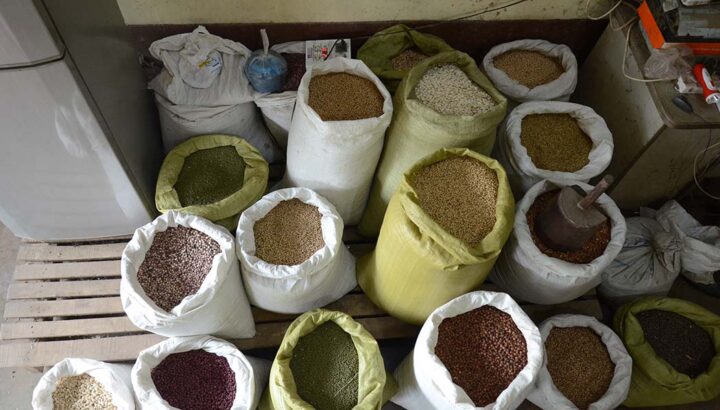January 24, 2022
The prices of pigeon pea continue gaining in spite of the high supply and they are unlikely to fall on the back of strong demand by India as well, a trader from Bayintnaung wholesale market shared his opinion.
The price of pigeon pea touched a high of over K1,380,000 per tonne in the third week of January 2022, which is a drop of K50,000 within a week.
Myanmar can export 250,000 tonnes of black gram (urad) and 100,000 tonnes of pigeon pea under the G to G pact. Additionally, India extended relaxations of conditions regarding clearance consignment until 31 March 2022.
At present, the price of pigeon pea in India is rising following the relaxation on bean import quota by India, according to Bayintnaung wholesale Centre’s price data.
Myanmar’s pigeon pea is primarily shipped to India, and also exported to Singapore, the US, Canada, Pakistan, the UK, and Malaysia. But, the export volume to other countries rather than to India is extremely small.
The domestic bean market is positively related to the law of supply and demand, said an official of Myanmar Pulses, Beans and Sesame Seeds Merchants Association.
This year, the G to G pact ensured strong market next five years, along with other relaxations on import quota, Myanmar Trade Promotion Organization under the Ministry of Commerce stated.
Myanmar’s agriculture sector is the backbone of country’s economy and it contributes to over 30 per cent of Gross Domestic Products. The country primarily cultivates paddy, corn, cotton, sugarcane, and pulses and beans. Its second largest production is the pulses and beans, counting for 33 per cent of agro-products and covering 20 per cent of growing acres. Among them, black gram, pigeon pea and green gram constitute 72 per cent of bean acreage. Other beans including peanut, chickpea, soya pea, black eyed beans, butter bean and rice bean are also grown in the country.
Myanmar exported more than 38,000 tonnes of pigeon pea to the foreign trade partners between 1 October 2021 and 14 January 2022 in the current mini-budget period (Oct 2021-Mar 2022), generating an income of US$25.6 million, according to the Ministry of Commerce’s trade data.—KK/GNLM


